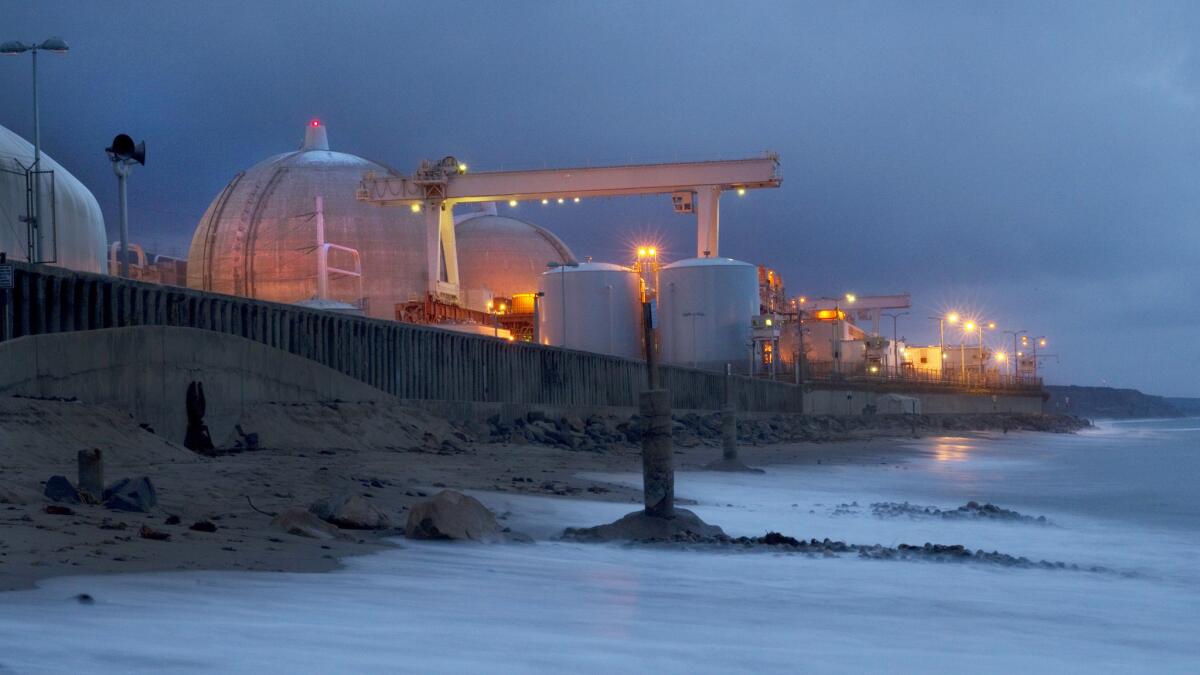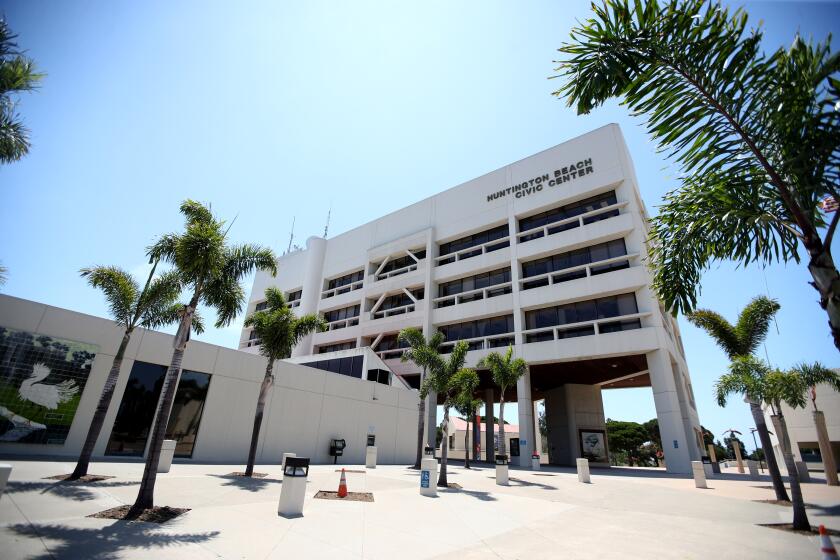San Clemente teen works to decommission nuclear power plants
- Share via
Jackson Hinkle grew up in the shadow of the San Onofre Nuclear Generating Station.
For years he’s surfed the waves at the foot of the beachfront facility, not far from 3.55 million pounds of lethal radioactive material, the progeny of the now-defunct plant.
As a child, he heard parents speak in hushed tones about spills, radiation sickness and evacuation plans.
“I didn’t really understand what it all meant,” said Hinkle, 18, of San Clemente. “But when I started getting older, learning about nuclear disasters like Chernobyl and Fukushima in class had an effect on me. I was learning these things just a few miles from the San Onofre plant, and I began to worry that something similar could happen to us.”
Atypical for his age, Hinkle found a way to channel his fear into something positive. This week, the recent San Clemente High School graduate traveled to Washington, D.C., to speak at a congressional briefing on decommissioning nuclear power plants. He also met with congressional members to discuss safe nuclear storage as a representative of activist group San Clemente Green.
Hinkle joined the group about a year ago after meeting its founder, Gary Headrick, at a rally Hinkle organized protesting the Dakota Access Pipeline. Headrick was immediately impressed with the young firebrand, whose comportment at the gathering seemed of somebody much older.
“He’s the kind of guy that gives you hope about the future,” Headrick said. “It’s hard to find young people who take these things seriously, but Jackson is fearless and well-informed.”
Hinkle’s interest in nuclear safety stemmed from his environmentalism. He started the Team Zissou Environmental Organization during his sophomore year at San Clemente High School The club’s name was influenced by the Wes Anderson movie “The Life Aquatic with Steve Zissou.”
“We got hundreds of students together and got to work on a number of relevant issues in the city, targeting things like plastic pollution and doing beach cleanups,” Hinkle said.
Last year, the group partnered with actor Jaden Smith on a movement to end the use of plastic water bottles in the Capistrano Unified School District.
Hinkle said the club now has seven chapters nationwide.
San Clemente Green was started in 2007 to create a sustainability plan for the city , but has become a local force on the San Onofre power plant issue. The activist group has joined a chorus heralding the demise of the domestic nuclear power industry.
San Onofre closed a year after a small amount of radiation leaked in 2012. Owner Southern California Edison decided to begin decommissioning the facility so the U.S. Navy could take back the property.
Many nuclear power plants in the country have or are on the verge of closing and no new plants have been built in three decades. While San Onofre is now a mere carcass, its insides seethe with spent nuclear fuel, which Hinkle and Headrick contend isn’t being safely stored. SCE disputes this on its website, saying its protocols are indeed safe.
About one-third of the fuel is sitting in “dry cask storage” — airtight containers reinforced by concrete. The remaining is in “wet storage,” in which the fuel is kept cool in a metal rack immersed in a pool of water.
Edison is in the process of transferring all spent fuel to dry cask storage. The process is expected to be completed by mid-2019.

Headrick and Hinkle argued that the 5/8-inch thick canisters in which that the spent fuel is being stored are inadequate and prone to cracking. They also contend the location of the canisters, just over 100 feet from the shoreline, is hazardous, due to potential sea-rise risks. A 28-foot seawall stands between the plant and ocean.
Edison spokeswoman Maureen Brown said the canisters have a proven safety track record of more than three decades and the system will safely store nuclear fuel until it can be relocated to an offsite location.
She also said the California Coastal Commission evaluated potential shoreline hazards in 2015 when it approved the storing of nuclear waste at the site, adding that the canisters have been tested and can withstand water submergence if it happens.
Edison officials have said in previous interviews with the Los Angeles Times that the dry cask storage is capable of withstanding tornadoes, floods, earthquakes and other disasters.
That hasn’t persuaded Hinkle, whose action against the nuclear plant has led him to seek a seat on the San Clemente City Council in the upcoming election.
While environmentalism will remain an important part of his political goals, Hinkle also hopes to work toward alleviating homelessness through affordable housing and support services.
“My environmental work is what initially got me interested, but since I have started really digging into politics since my junior year, I have really discovered all these other issues that I care about,” Hinkle said.
Hinkle recently formed a coalition with young local candidates called Orange County Students for City Council. They are trying to bring a progressive messages to various cities throughout the county.
While campaigning, Hinkle plans to attend Saddleback College.
3:27 p.m. Thursday: Updated with comments from Edison spokeswoman Maureen Brown.
Twitter:@benbrazilpilot
All the latest on Orange County from Orange County.
Get our free TimesOC newsletter.
You may occasionally receive promotional content from the Daily Pilot.




